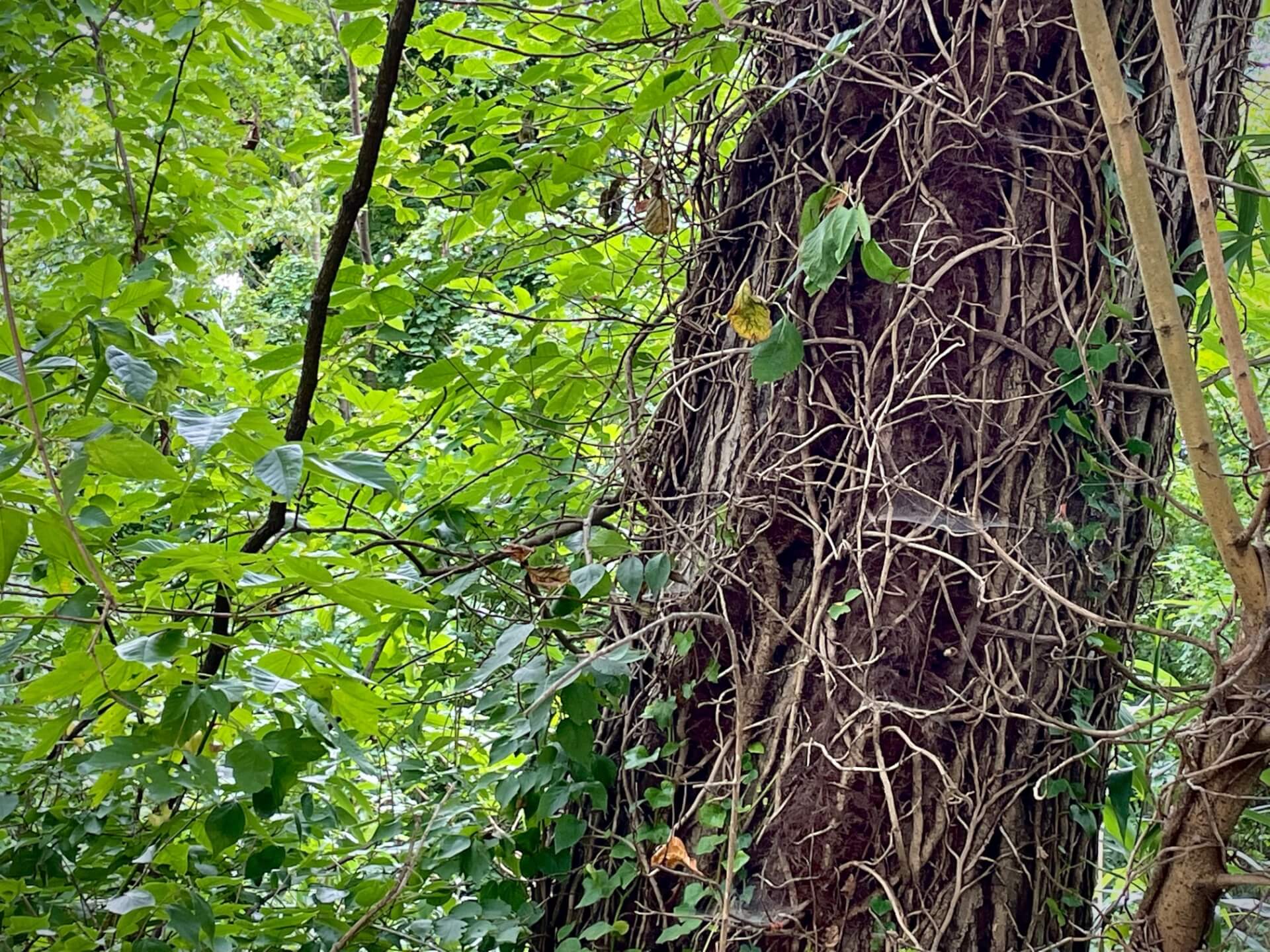
Luke Caron, a college student from Silver Spring, crouched in a tangle of bushes, trees and vines near a busy Takoma Park thoroughfare the other day, pruning saw and shears in gloved hands, hacking away at English ivy that was climbing an oak.
Surrounded by poison ivy, deer ticks and other potentially nasty and itchy pests of the insect and floral varieties, Caron wore shorts, with wool socks pulled up just below his knees.
“I’m one of those shorts in winter guys,” he said. “I don’t even own pants.”
It may be difficult to imagine, but Caron — along with half a dozen or so better-covered volunteers who were nearby, crouching and hacking — was doing his part to combat climate change.
Invasive vines are killing mature trees with alarming frequency in Maryland — robbing them of their ability to capture deadly carbon emissions. But in different parts of the state, an increasing number of volunteers are taking to forests, parkland, vacant lots and public rights-of-way to stop these trees from choking to death.
It’s a remarkably efficient and localized way to address climate change: an experienced hand can remove deadly vines from a tree in as little as five minutes, immediately adding five or 10 years to the tree’s lifespan, environmentalists say. While Maryland lawmakers this year passed an aggressive plan calling on the state to plant 5 million trees over the next decade, newly-planted trees do not sequester carbon at the same rate as older ones.
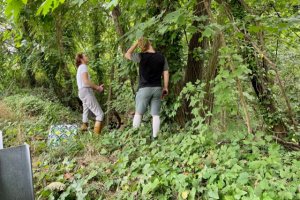
Luke Caron, an intern with the Chesapeake Climate Action Network, and another volunteer discuss how best to free a Takoma Park tree from invasive vines. Photo by Danielle E. Gaines.
“To stabilize the climate, we’ve got to do everything,” said Mike Tidwell, executive director of the Chesapeake Climate Action Network (CCAN), a regional organization based in Takoma Park. “Getting vines off the trees is low-hanging fruit. This is about as low-hanging fruit as you can find. These trees are in distress. If we didn’t do anything, they would die in five to seven years.”
Caron is an intern this summer with CCAN, and he is helping coordinate the group’s program that sends volunteers to remove choking vines from Takoma Park trees every Saturday morning.
“I was looking for a job for the summer that actually achieves something,” he said.
Mission accomplished: Tidwell calls vine removal “the greatest sense of instant gratification you’re ever going to get.”
‘They think it’s pretty’
“Weed warrior” programs have existed in different parts of Maryland for many years. What’s different about CCAN’s latest campaign is that it’s girded and guided by a new study on the health of every tree in Takoma Park, a city of 18,000 that borders Washington, D.C., and is known for its lush tree canopy.
For five weeks in February and March, Jesse Buff, a CCAN-funded conservationist — and Takoma Park resident — methodically walked all 36 miles of the city’s streets, moving from City Council ward to City Council ward, surveying trees. What he found alarmed him: At least 5,000 trees were in imminent danger of being strangled by invasive vines.
“I was struck by the number, because we consider Takoma to be fairly progressive and that usually aligns with environmental consciousness,” Buff recalled. “So you wouldn’t think that you’d see so many threatened trees.”
The biggest culprits, according to the CCAN study: English ivy, porcelain berry, winter creeper, Chinese wisteria, Japanese wisteria, and Japanese honeysuckle. Most were imported to the U.S. through the decades and were once considered decorative. Some are still for sale at Maryland nurseries.
“Often people aren’t aware of the problem,” said Kenneth Jolly, the director of field operations for the Maryland Forest Service, an agency within the state Department of Natural Resources. “They see English ivy growing up a tree and they think it’s pretty.”
Buff’s study also exposed where the problem is most pervasive: On public land and rights-of-way, on abandoned lots or forested areas, on the grounds of multi-family apartment complexes, and at the border of properties, where true ownership may not be definitively known.
Jolly called the CCAN report “new and exciting,” and said it “adds to our knowledge” of the nature of the threat to endangered trees in Maryland. Other naturalists in the state agree.
“Invasives are a statewide issue,” Jolly said. “The conclusions from Takoma Park are very interesting. It’s been a known issue in forestation for quite a while.”
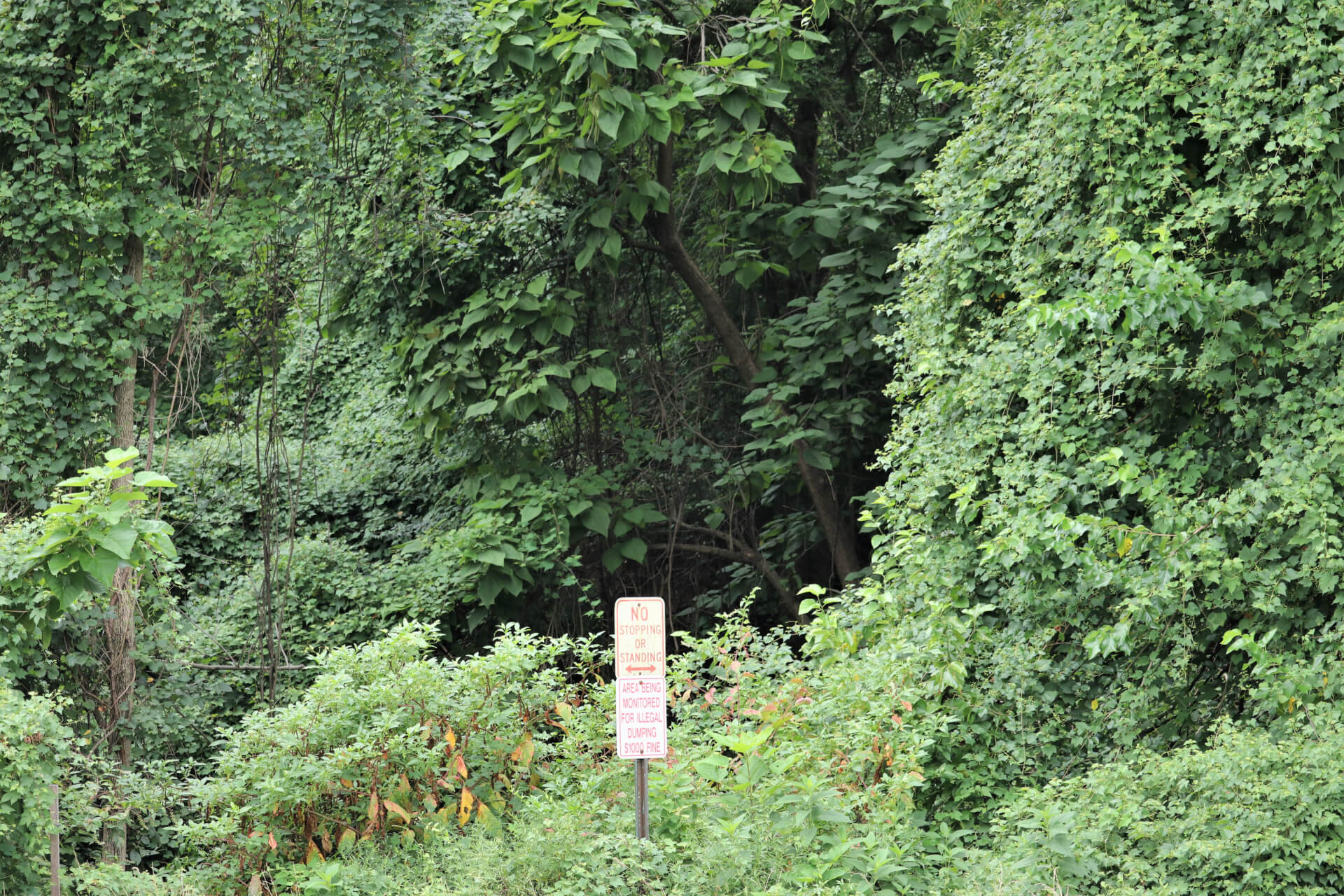
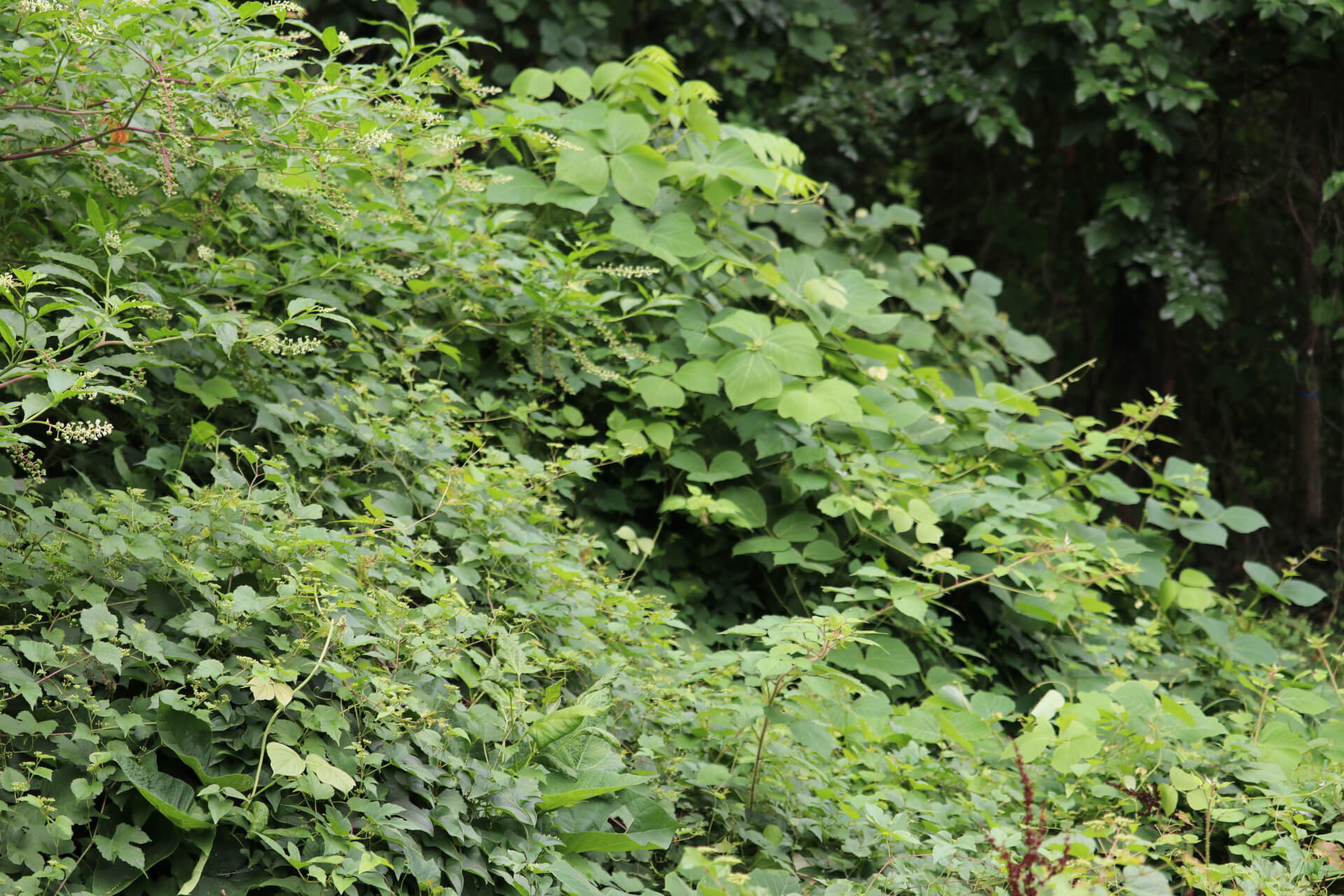


‘The job kind of fell into my lap’
The early days of the pandemic was the genesis of the study.
For years, Tidwell looked down from his seventh floor CCAN office window and admired a tall Tulip Poplar tree several blocks away in the Takoma neighborhood of D.C. that abuts the Maryland city. As the pandemic hit, he and his wife began taking long walks and decided to try to find the tree. When they finally did, he was dismayed to find that the tree, which he estimated to be about 125 years old, was dying, wrapped in impenetrable layers of invasive vines.
At the same time, Buff, who had spent most of his professional career working in conservation and international development fields, was eager to spend more time focusing on local issues. He had just finished a stint working with the Rock Creek Conservancy and was wondering what to do next when COVID-19 hit.
“Like many of us, with no gyms to go to with COVID, we just started walking around,” Buff said. That’s when he started observing so many invasive vines and wondering about the health of Takoma Park’s trees.
“As someone who knows that trees are some of the best climate-based solutions we have, I thought, ‘We’ve got to do something about this,'” he said.
Because he had participated in CCAN events through the years, including the annual Polar Bear plunge, the wintertime swim in the Chesapeake Bay (theme: “Keep winter cold”), Buff said he was struck by how generous the group’s donors were. So he and Tidwell hit on the idea of raising money for a tree survey.
“This job kind of fell into my lap,” Buff said.
As they planned and executed the Takoma Park tree survey, Tidwell and Buff wondered whether a similar study of tree health had been done anywhere in the country. After exhaustive Google searches and conversations with contacts around the country, they came to the surprising conclusion that no such study appeared to exist.
“It’s amazing how little people talk about this, measure it, face it,” Tidwell said.
Takoma Park is often the butt of jokes in Maryland and in some ways is a parody of itself. It’s the “People’s Republic,” known for its lefty politics. It’s got a venerable and venerated food co-op, and there are drum circles in the center of town every summer and winter solstice.
Takoma Park is also one of the most diverse communities in the state — even though there are obvious racial and economic disparities. It’s a nuclear-free zone — a designation that actually has practical applications, even if it is the source of snickers. It’s the community that’s most unlike the rest of Montgomery County — the county that, in the view of most Marylanders, is most unlike the rest of Maryland.
But Tidwell and Buff believe the Takoma Park survey, and the volunteer organization they have put in place to save the city’s trees, could become a model for the rest of the state — and even the nation. After all, President Biden wants to create a Civilian Climate Corps, modeled after the New Deal-era Civilian Conservation Corps, to do climate resiliency work across the country.
“We’ve got to spread this model,” Tidwell said. “Really, what I want to do is share the idea with the White House.”
‘We’re all living on a more local scale’
Maryland naturalists believe there is much to be extrapolated from the CCAN study. As the climate warms, as summers lengthen and winters shorten, as the Mid-Atlantic region becomes increasingly wetter, there are more opportunities for invasive vines to thrive and threaten native trees.
Evergreens, like English ivy, can do their damage year-round, giving them a “leg up” on native species.
“They just kind of find their footing and take off,” said Ashley Bowers, an environmental policy analyst at the Baltimore City Recreation and Parks Department’s Forestry Division.
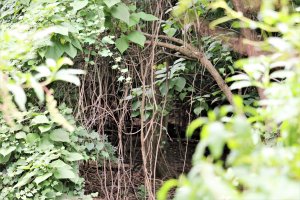
Invasive vines hang from the tree canopy above a small ravine in Takoma Park. Thousands of trees in the town are in danger of being strangled by the vines, naturalists say. Photo by Danielle E. Gaines.
Even when invasive vines aren’t killing trees, they may be weakening them, making them more vulnerable to extreme weather conditions like high wind or heavy snowfall.
The U.S. Forest Service takes a regular census of trees in all 50 states, focusing mostly on forest lands, and synthesizes the results every five to 10 years. But every year, some portion of Maryland’s forests, both on public and private lands, are surveyed.
According to the latest statistics, from 2019, Maryland has an estimated 2,448,338 acres of forestland containing 1.43 billion trees. Japanese stilt grass makes up almost 7% of the plot cover in the state’s forests, and Japanese honeysuckle represents almost 3% of the plot cover. The federal census makes note of 11 other invasive species present in Maryland.
In Baltimore City, which has about 2,400 acres of forests and parkland, aging infrastructure necessitates regular maintenance work on water and sewer lines, electric wires and potholed streets — and that construction activity threatens trees there as much as invasive vines, Bowers said.
Being a port city, Baltimore is also more likely than the rest of Maryland to see invasive plant species introduced, when seeds hitch a ride on container ships from other parts of the world.
“The urban pressures that are being put on city trees are becoming a greater challenge with every year,” Bowers said.
Bowers coordinates the city’s “Weed Warrior” program, which trains residents to distinguish invasive vines from native species and empowers them to come to the aid of dying trees by removing non-native vines from any public land in the city. The program is modeled after the state’s oldest, in Montgomery County, which has a similar mission.
“It’s amazing what our stewards do out there in the parks and forests,” she said. “We’ve got support all across the city. It’s really incredible.”
Bowers said that about 340 Baltimoreans have gone through the Weed Warrior program, and that 200 are fully certified to remove invasive plants from any park or forestland in the city. Interest in the program — which provides two rounds of training a year — has grown since the pandemic.
The city canceled its spring 2020 session as COVID-19 hit, but 50 people trained last fall and 45 signed up this spring. The next training will take place in late September.
“People have been looking for ways to engage and also to support their community,” Bowers said. “We’re all living on a more local scale over the past two years. And it’s helped people really take a look at their local communities.”
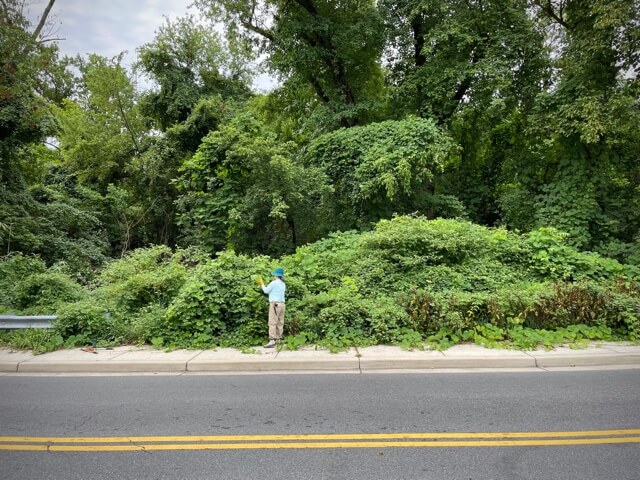
Lisa Schamess, a volunteer with the Chesapeake Climate Action Network, identifies invasive vines engulfing a juvenile black walnut tree along Poplar Avenue in Takoma Park. Invasive vines have overtaken the trees along the publicly owned plot of land. Photo by Danielle E. Gaines.
Beware the ‘vine eye’
In that same spirit, the Chesapeake Climate Action Network is relying on a small network of volunteers to spread the word about the Takoma Park study — and save the trees.
Since late spring, volunteers have gathered every Saturday morning outside the food co-op and fanned out across the city. They typically spend three hours at a couple of sites on publicly-owned land, or where property owners have given them permission to work, removing thickets of weeds and vines from vulnerable trees and native plants.
“I removed some on someone’s property the other day that was larger than my neck,” Caron, the CCAN intern, reported.
CCAN has also begun dropping leaflets in residents’ mailboxes, informing them about the tree survey and the threat that invasive vines pose to property values, public safety — and the climate. The environmental group urges residents to look over their own properties and quickly address pressing problems. But it also offers to help.
On a recent hazy Saturday, two volunteers, Frances Stewart of Bethesda and Lisa Schamess of Silver Spring, visited a home across the street from a tangled forested area where the homeowner had requested help with invasive plants. The resident, as it happened, was not home, but the two women looked over the backyard approvingly.
“This is a plant lover for sure,” Schamess said. The women then went across the street and joined other volunteers who were already at work, chopping away vines in a dense, city-owned forested area that Tidwell referred to as “a dystopian hellscape.”
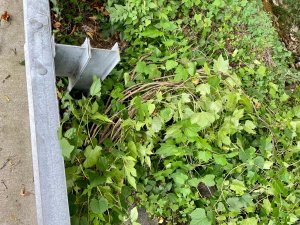
Vines that have been cleared from trees in Takoma Park are gathered near a guardrail along Poplar Avenue. Photo by Danielle E. Gaines.
Stewart and Schamess are training to get their certificates from the Montgomery County Weed Warrior program and join the Takoma Park group when they can.
Schamess said she learned about Weed Warriors and the CCAN study when she was trying to figure out how to remove some invasive stilt grass from her property.
“It’s a problem that’s right in front of your nose,” she said.
But Schamess observed that the magnitude of the threat to trees and the climate has overwhelmed her at times.
“I went through a period of mourning before deciding to do something about it,” she said.
Stewart said that when she gets her certificate, she plans to focus on getting rid of invasive vines in her immediate neighborhood.
“There’s a little park near me that I’m probably going to adopt as soon as I’m trained to do it,” she said.
Throughout the course of their shift, the two women acted as ambassadors for CCAN’s volunteer program. As a group of volunteers walked from the co-op to the work site half a mile away, they were stopped by motorists curious about the pruning equipment and where they were going.
Later that morning, a young man who lives nearby listened intently as Schamess tried to show him differences between native and non-native plant species. The man said he’d try to volunteer the following week.
Tidwell, CCAN’s director, said the group has already rid almost 1,700 trees in the city of invasive vines, and said his goal is no less than saving the 5,000 trees identified in Buff’s study.
But Jolly, the state forestry official, said invasive vines are just a reality of modern-day life and global warming. He compared trying to combat them to a boy putting his finger in a hole in a dike, only to see five more holes open up.
“It’s virtually impossible to eradicate,” Jolly said. “Once they’re here, they’re here. But we try to minimize their impacts.”
CCAN volunteers describe their work as tremendously rewarding. But they all say the study — and their efforts to respond to the threat it outlines — has literally changed how they see the physical world. Several now say they are blessed — and cursed — with a phenomenon they call “vine eye.”
“One of the side effects of developing a vine eye is it can ruin your day if you see invasive vines everywhere,” Buff said.
And the climate activists are under no illusions that the work they are doing is a panacea.
“This is kind of a Band-Aid,” Buff said. “Chopping vines off of trees is a quick-fix. But it’s not a permanent fix. What we’re doing is buying these trees time.”


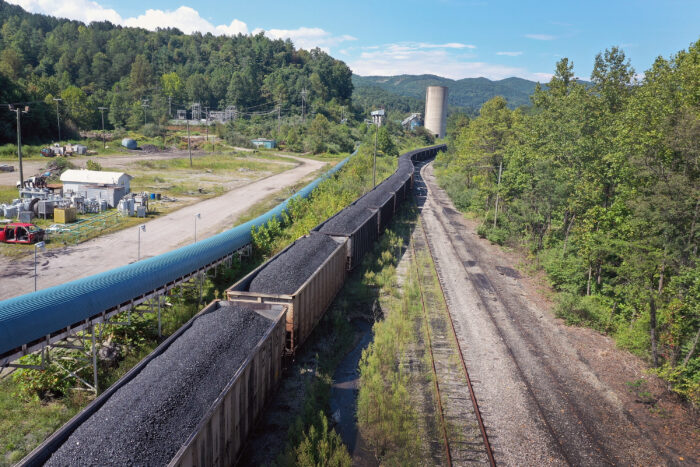
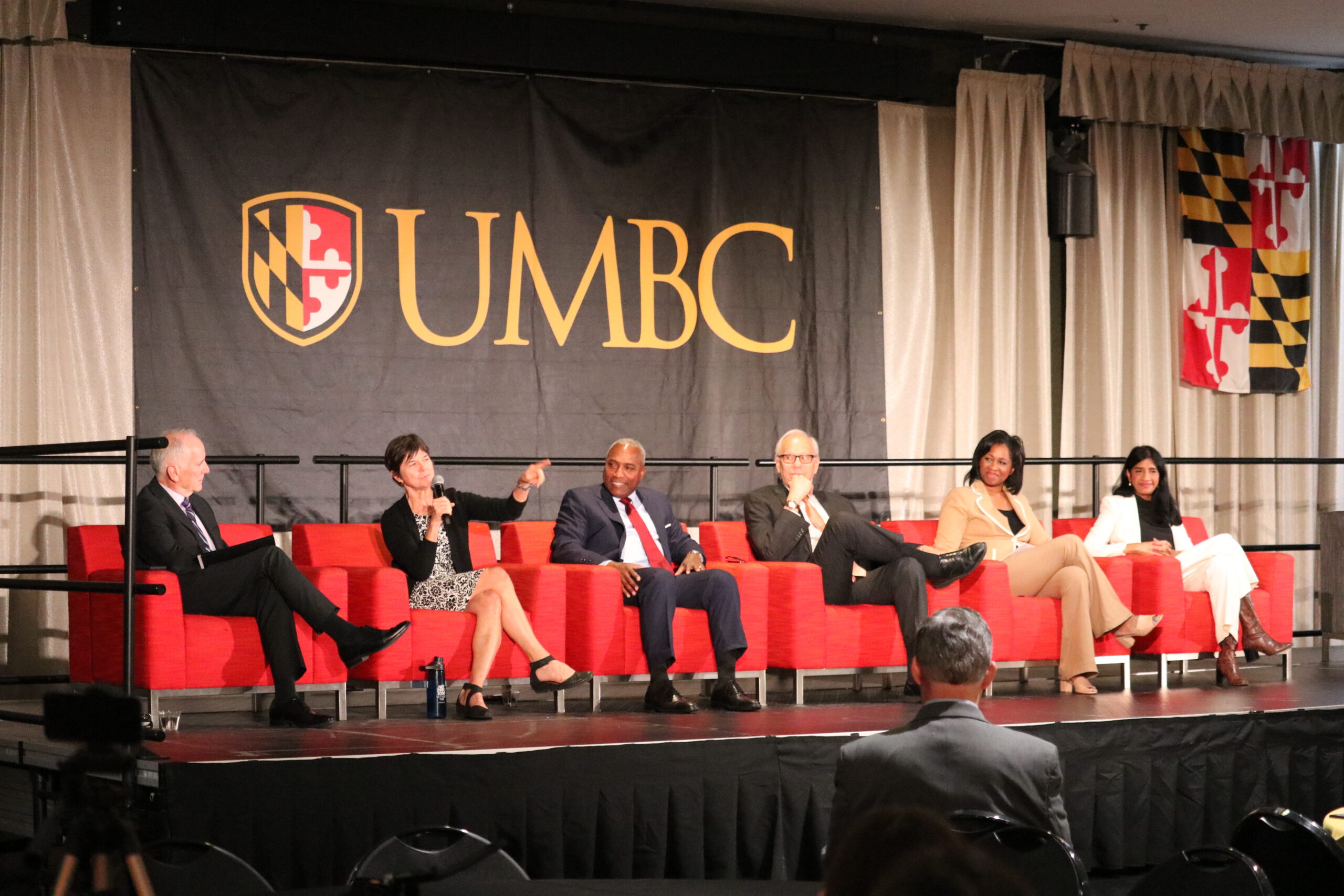
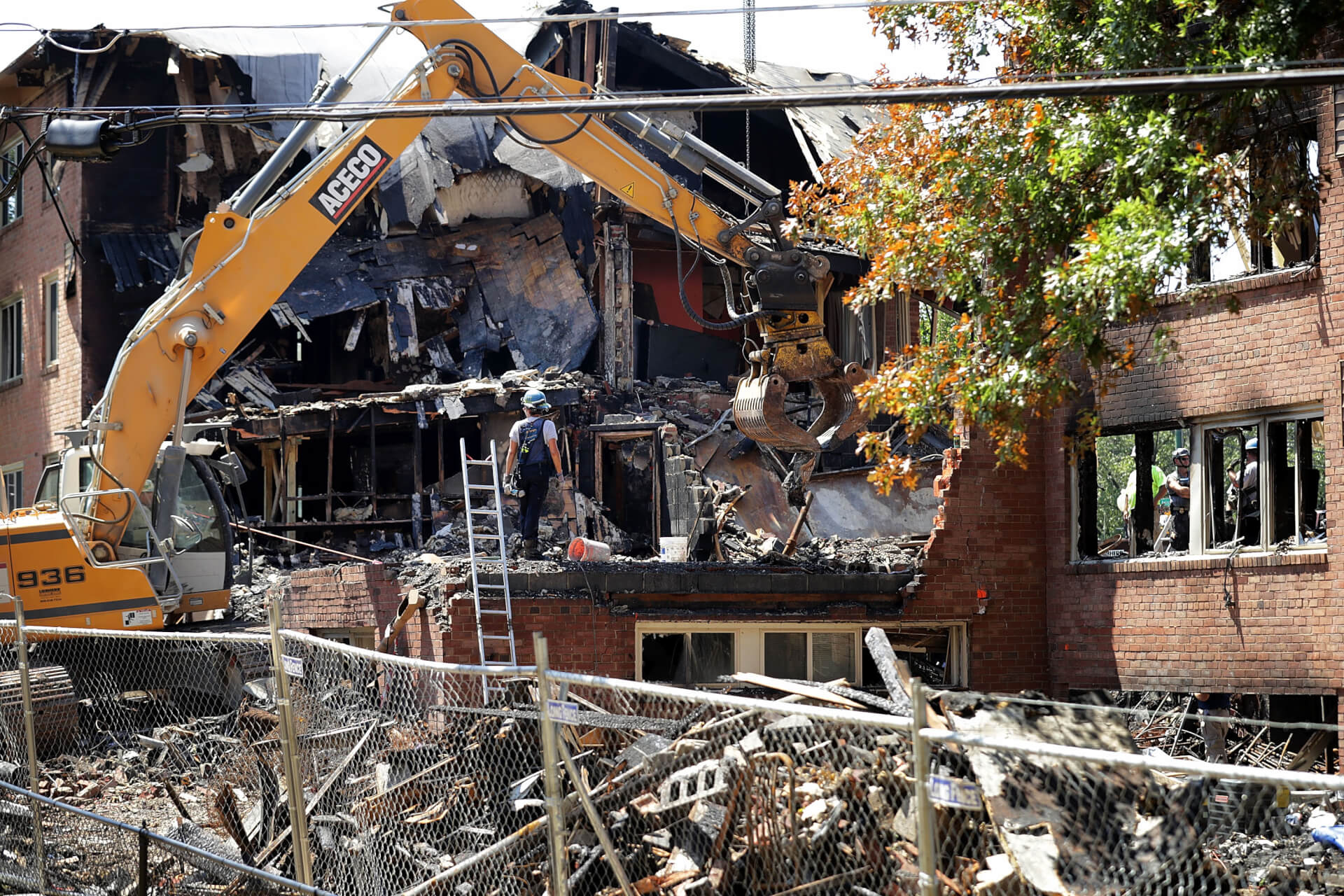
 Creative Commons Attribution
Creative Commons Attribution